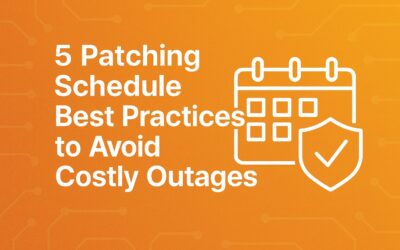Cybercriminals thrive on opportunities, and zero-day exploits provide them with the perfect avenue to strike. A zero-day attack exploits vulnerabilities in software or hardware before developers are even aware of the issue, let alone able to patch it. The result? A significant uptick in successful breaches. Let’s break down why zero-day exploits are increasing and, more importantly, what you can do to prepare.
What Are Zero-Day Exploits?
A zero-day exploit targets a software or hardware vulnerability that is unknown to the vendor or developer. The term “zero-day” refers to the fact that developers have had zero days to address the flaw, leaving it open for attackers to exploit. Zero-day vulnerability can be found in operating systems, applications, hardware, or even firmware. Cybercriminals use them to bypass security measures, gain unauthorized access, and launch attacks before anyone knows a problem exists.
Zero-day exploits are particularly dangerous because they take advantage of weaknesses before patches or mitigations are available, leaving organizations exposed to breaches, ransomware, data theft, and more.
Why Zero-Day Exploits Are Increasing
Zero-day exploits have become a favored tool for cybercriminals and nation-states alike. The rise in their use is driven by a combination of technological complexity, financial incentives, delayed patching, and strategic geopolitical objectives. Here’s a closer look at the key factors fueling their growth:
1. Growing Complexity in Technology
Businesses rely on intricate software stacks with APIs, open-source libraries, and IoT devices, each adding potential vulnerabilities. APIs can expose sensitive data, while unpatched open-source components are prime targets. IoT devices often lack robust security, creating additional entry points for attackers.
2. Profit-Driven Cybercrime
Zero-day exploits are now commodities on the dark web, sold for thousands or even millions of dollars. Organized cybercrime groups develop and sell exploit kits, making sophisticated attacks accessible to less skilled hackers and fueling an increase in their use.
3. Lags in Patching
Even with vendor patches available, delays in deployment due to testing, resource constraints, or fear of disrupting operations leave systems exposed. Inconsistent patching across systems further widens these security gaps, creating exploitable vulnerabilities.
4. State-Sponsored Activity
Governments invest heavily in zero-day exploits for espionage and sabotage, targeting critical infrastructure and industries. Unlike profit-driven hackers, state-sponsored groups use these exploits strategically, sometimes holding them for years before deploying them.
Recent Zero-Day Attacks
In November 2024, Russian-based RomCom hackers exploited zero-day vulnerabilities in Firefox and Tor Browser, targeting users in Europe and North America through a use-after-free flaw (CVE-2024-9680), which Mozilla quickly patched.
Similarly, an Android zero-day tied to Qualcomm chips (CVE-2024-43047) enabled attackers to control devices until a fix was issued. Cisco’s Adaptive Security Appliances faced sustained attacks using previously unknown vulnerabilities, resulting in advanced malware installations.
These cases emphasize the urgency of proactive defenses to mitigate the damage caused by zero-day exploits.
How to Prepare
Zero-day exploits are unpredictable, but your defenses don’t have to be. By taking a proactive approach and implementing robust security measures, you can minimize the risk and blast radius of these attacks. Here’s how to prepare effectively:
1. Invest in Threat Intelligence
Stay ahead of attackers by partnering with security providers who monitor dark web markets and hacker forums for emerging zero-day exploits. Combine external threat intelligence with internal tools to identify zero-day vulnerabilities in your systems.
2. Implement Zero Trust Security
Restrict access based on strict verification. Enforce MFA, role-based permissions, and microsegmentation to limit an attacker’s ability to navigate your network if breached. Continuously monitor and validate users and devices.
3. Layered Defense Systems
Combine tools like EDR, firewalls, and intrusion detection systems to block threats at different levels. Use sandboxing to analyze suspicious files, adding an extra layer of protection against zero-day attacks.
4. Patch Regularly and Rapidly
Automate patch management to quickly address known zero-day vulnerabilities. Test and prioritize patches for critical systems, reducing the window of exposure and keeping systems secure.
5. Monitor and Respond in Real Time
Use SIEM tools to detect unusual activity across your network. Pair these with a clear, rehearsed Incident Response Plan to swiftly contain and mitigate zero-day threats as they occur.
6. Leverage AI and Machine Learning
Deploy AI tools to detect anomalies and recognize zero-day attack patterns. Machine learning improves detection accuracy over time, offering faster responses to evolving threats.
7. Train Employees
Human error is often the weakest link in cybersecurity. Regularly educate employees on recognizing phishing emails, suspicious links, and social engineering tactics. Conduct simulated attacks to test awareness and reinforce best practices. Ensure training is practical and ongoing, covering emerging threats and real-world scenarios to keep your workforce vigilant against zero-day exploits.
Key Takeaway
Zero-day exploits will remain a significant threat as technology evolves. The key is preparation. By adopting a proactive approach—investing in intelligence, bolstering defenses, and acting swiftly—you can minimize the damage and stay ahead of attackers.
We are experts in preparing organizations for zero-day attacks. If you have any questions or would like help implementing security measures, contact us.



